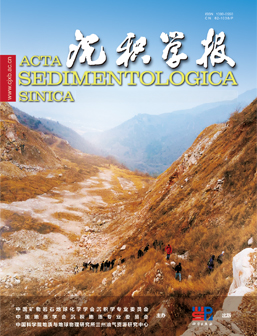The Source-to-Sink Filling Process and Paleogeographic Pattern of the Late Carboniferous Benxi Formation in Eastern Ordos Basin
doi: 10.14027/j.issn.1000-0550.2023.099
- Received Date: 2023-06-21
- Available Online: 2023-10-19
-
Key words:
- Paleogeographical patterns /
- Clastic zircon /
- Contribution rate /
- Benxi Formation /
- Ordos Basin
Abstract: [Objective] The Upper Carboniferous Benxi Formation in the Ordos Basin is the first set of sea-land interaction coal-bearing strata after the Caledonian movement, and has great exploration potential, but the coupling relationship between the basin and mountains under the influence of the north-south source system and multi-source composite in the eastern part of the basin is still controversial due to the tectonic activity of the periphery orogenic belt. [Method] In order to further trace the source system and restore the paleogeographical pattern, the sedimentary source filling process of the Benxi Formation in the eastern Ordos Basin was discussed by analyzing the characteristics of the rock chip components, rare earth elements and the U-Pb age characteristics of clastic zircon, combined with the tectonic background and lithological characteristics of the host rock. [Results] The sediments in the northern part of the study area were mainly derived from the Inner Mongolia uplift (Seltenshan, Wula-Daqingshan, Jining area) and the Central Asian orogenic belt in the active continental margin tectonic background. The southern part is mainly supplied by clastic material from the North Qinling, and the tectonic background of the source area is relatively complex, which is mainly a mixture of passive continental margin and continental island arc. In the North Qinling, the tectonic environment of stretching and stretching to collision and extrusion under the background of trench-arc-basin is formed. The parent rocks in the northern and southern source areas are the mixture of granitic rock and alkaline basalt, and the northern and southern provenance systems converge in the Lian45-Chengjiagou area. [Conclusion] As a whole, the Central Asian orogenic belt of Benxi Age has a high degree of uplift and denudation on both sides of the study area, which reflects the characteristics of irregular oblique collision in the northern part of the North China Plate. The northern margin of the North China Plate has a high uplift, which provides the main provenance for the northern part of the study area, and is dominated by the development of a large tide-delta complex system. Under the influence of strong source supply, the sand body extends farther in the northeast of the study area. Compared with the northern provenance, the overall provenance supply in the south was weaker, with the North Qinling Mountain as the main source area, and the southern margin of the North China Plate was uplifted in low amplitude at this time, and the sedimentary system of the barrier coast was mainly developed. In the area where the north and south sources meet, more detrital materials from the Northern Qinling Mountains are accepted, and a large number of tidal sand dams are deposited due to the transformation of eastward and north-east currents.
| Citation: | The Source-to-Sink Filling Process and Paleogeographic Pattern of the Late Carboniferous Benxi Formation in Eastern Ordos Basin[J]. Acta Sedimentologica Sinica. doi: 10.14027/j.issn.1000-0550.2023.099 |






 DownLoad:
DownLoad: